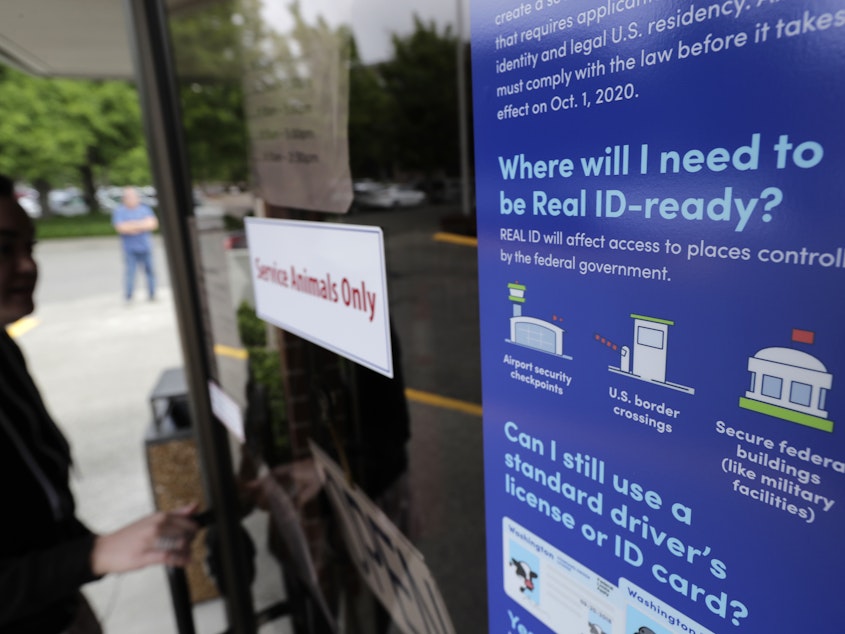Planning To Fly A Year From Now? Better Double Check Your Driver's License

Starting Oct. 1, 2020, when the REAL ID law takes effect, you'll need a star at the top of your driver's license if you plan to fly anywhere in the U.S. Essentially an enhanced driver's license, it will be required at the airport gate, unless you have another accepted form of ID. And officials are worried that one year out, many people don't yet have one.
Congress approved the REAL ID Act in 2005 to address concerns of the 9/11 commission, which found that it was too easy for people to obtain drivers licenses, posing a security risk. To get a REAL ID you typically need to show a birth certificate, or green card, social security card, and two documents that show your address.
A study done for the U.S. Travel Association shows only three out of four Americans have gotten a REAL ID drivers license (indicated by a star at the top.) Erik Hansen, vice president for government relations at U.S. Travel says that's going to be problem for would-be airline passengers next year.
"Unfortunately it means they're gonna learn the hard way what the Department of Homeland Security has said," Hansen tells NPR. "If you don't have one of the compliant IDs, either a REAL ID or one of the alternatives like a passport, you're actually gonna be turned away at the checkpoint and you're not going to be allowed to board your flight."
Hansen says an estimated 78,000 people could possibly be turned away on the first day of the new requirement, at an estimated cost to the economy of $40 million in lost travel related spending.
Sponsored
A REAL ID-compliant license will also be needed to access most federal buildings and military bases.
As Hansen noted, there are alternative forms of ID that are acceptable, including passports and military IDs. But at a recent hearing, Sen. Roger Wicker, R-Miss., who chairs the Senate Commerce, Science and Transportation committee, said that's not really going to help. "I think we we need to heighten awareness about this," Wicker said. "Most people don't have a passport. And most people are not in the military or veterans, so it's going to be that driver's license nine times out of 10."
At that hearing, acting TSA Deputy Administrator Patricia Cogswell said her agency is "doing everything it can to get the word out" about the upcoming deadline, but it's complicated. Some people have valid licenses that are not REAL ID compliant. And some states issue both compliant and non-compliant licenses. "So they may be renewing their license not fully understanding that they are getting a non real I.D. compliant license."
Real ID has been fought by many states that objected to the new law, saying it's a form of national ID and/or too expensive to implement. And Congress has extended the deadline to give them a chance to comply in the past. Hansen at U.S. Travel, is not expecting TSA to move the deadline again. But, he says, there are things the government could do.
"I think realistically we just can't solve this by trying to send 182 million Americans to the DMV within the next year," he says. But Congress can take steps to modernize the REAL ID Act. For instance, Hansen says, allowing travelers who are enrolled in the TSA PreCheck program, which was implemented after the REAL ID act became law, to go through the checkpoint regardless of whether they have the Real I.D. Hansen says that would assure "we're not just racing to catch up with the past."
Sponsored
The TSA has put up signs and is verbally warning travelers of the looming deadline. And the agency advises travelers who aren't sure if their license is compliant to check with their state driver's license agency. [Copyright 2019 NPR]


